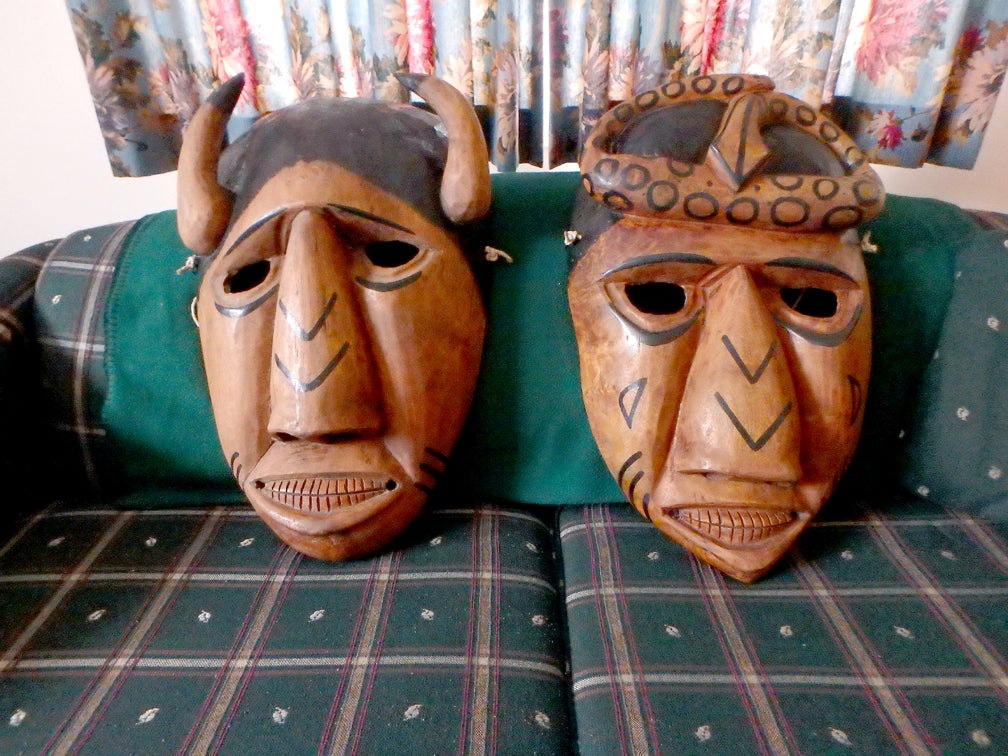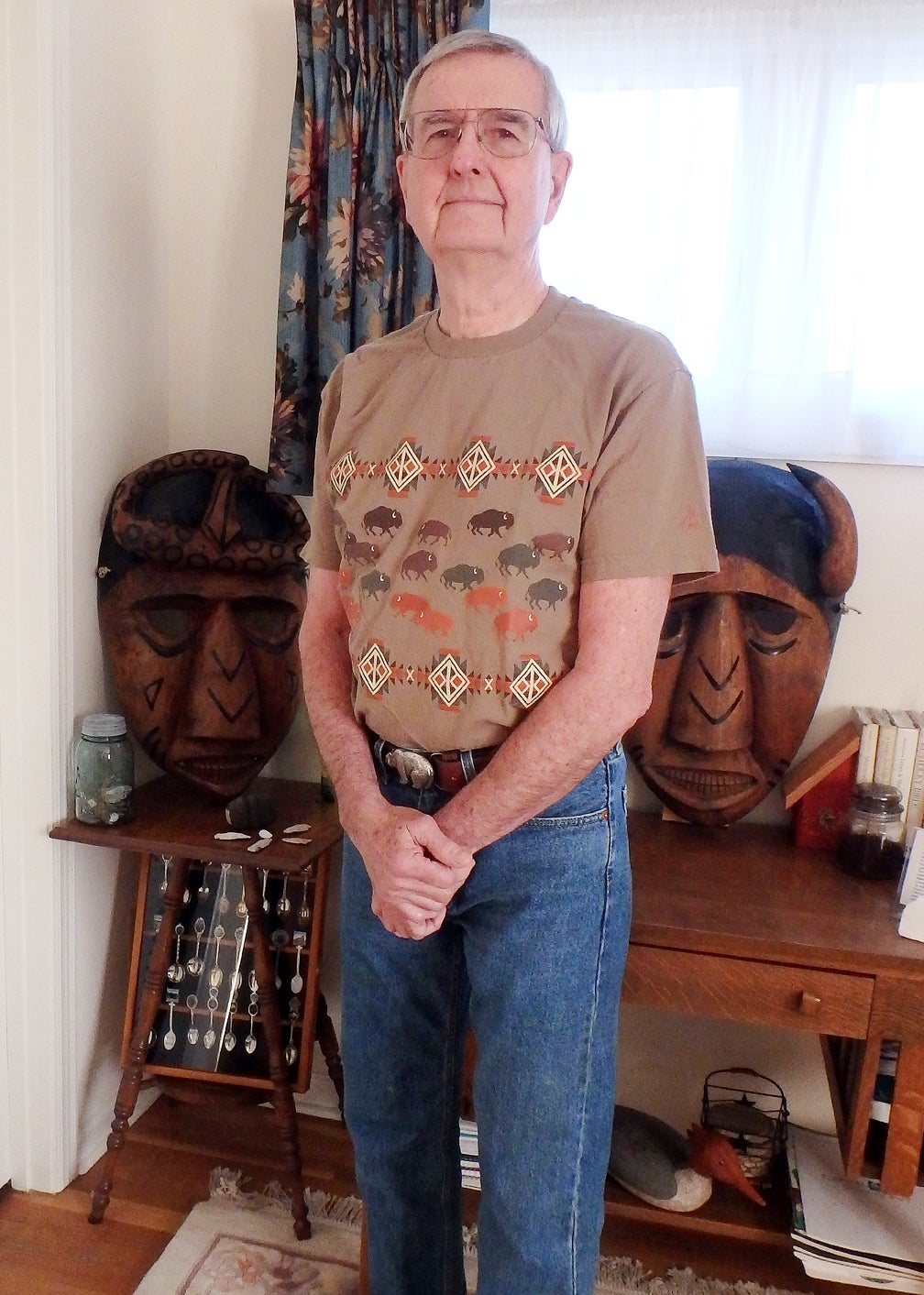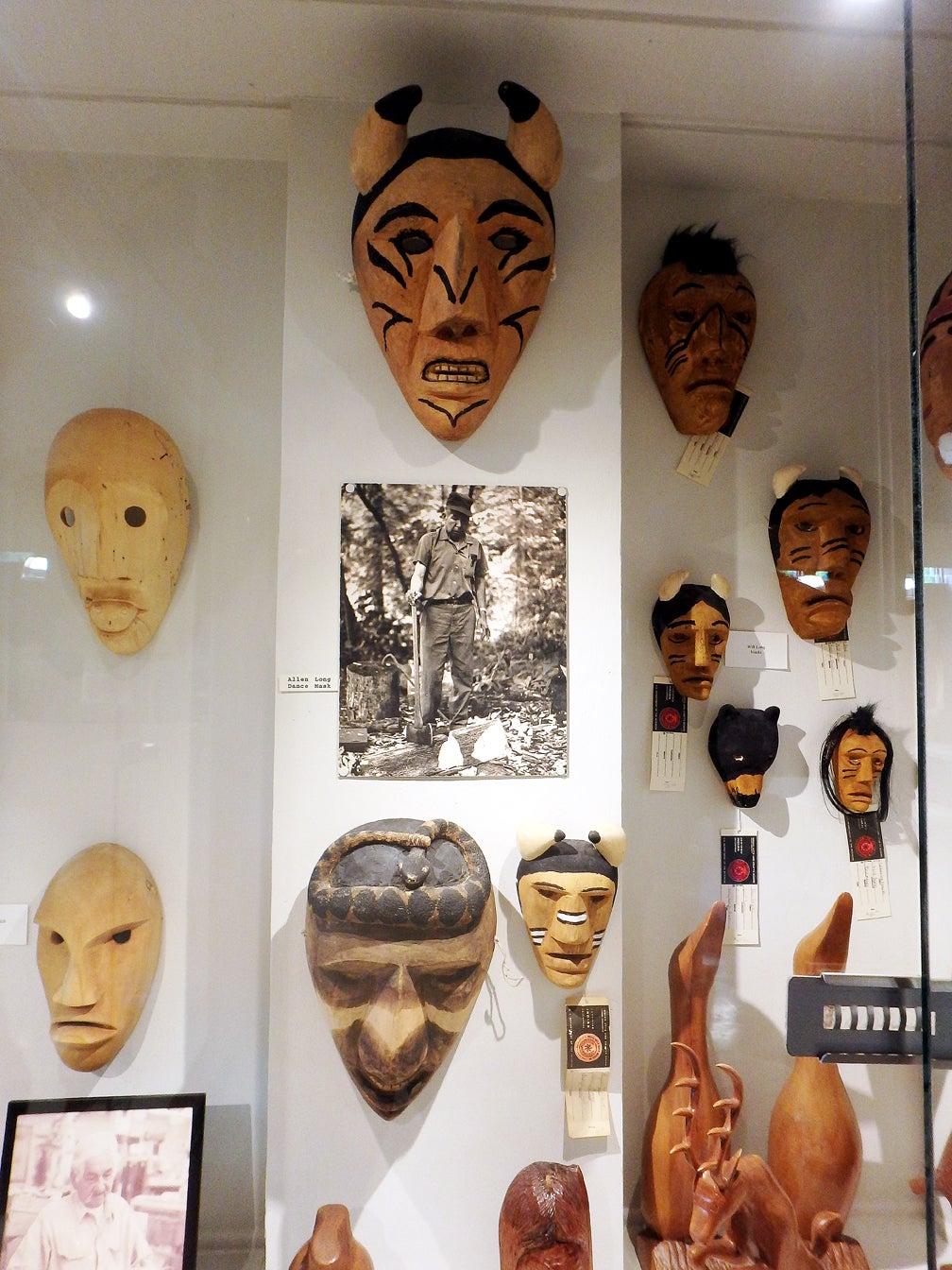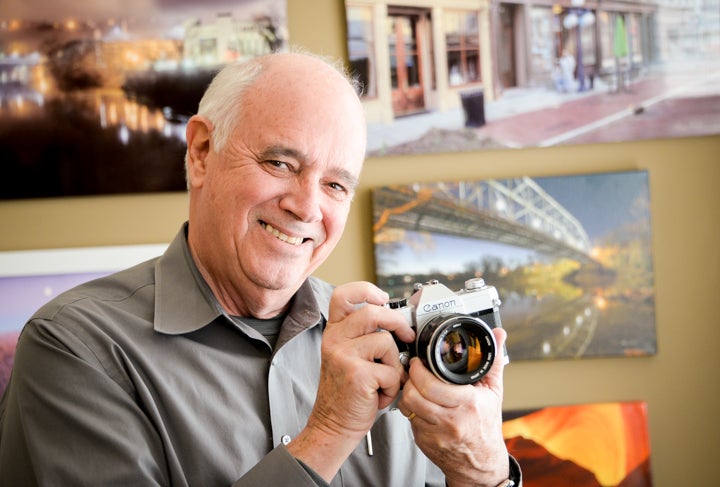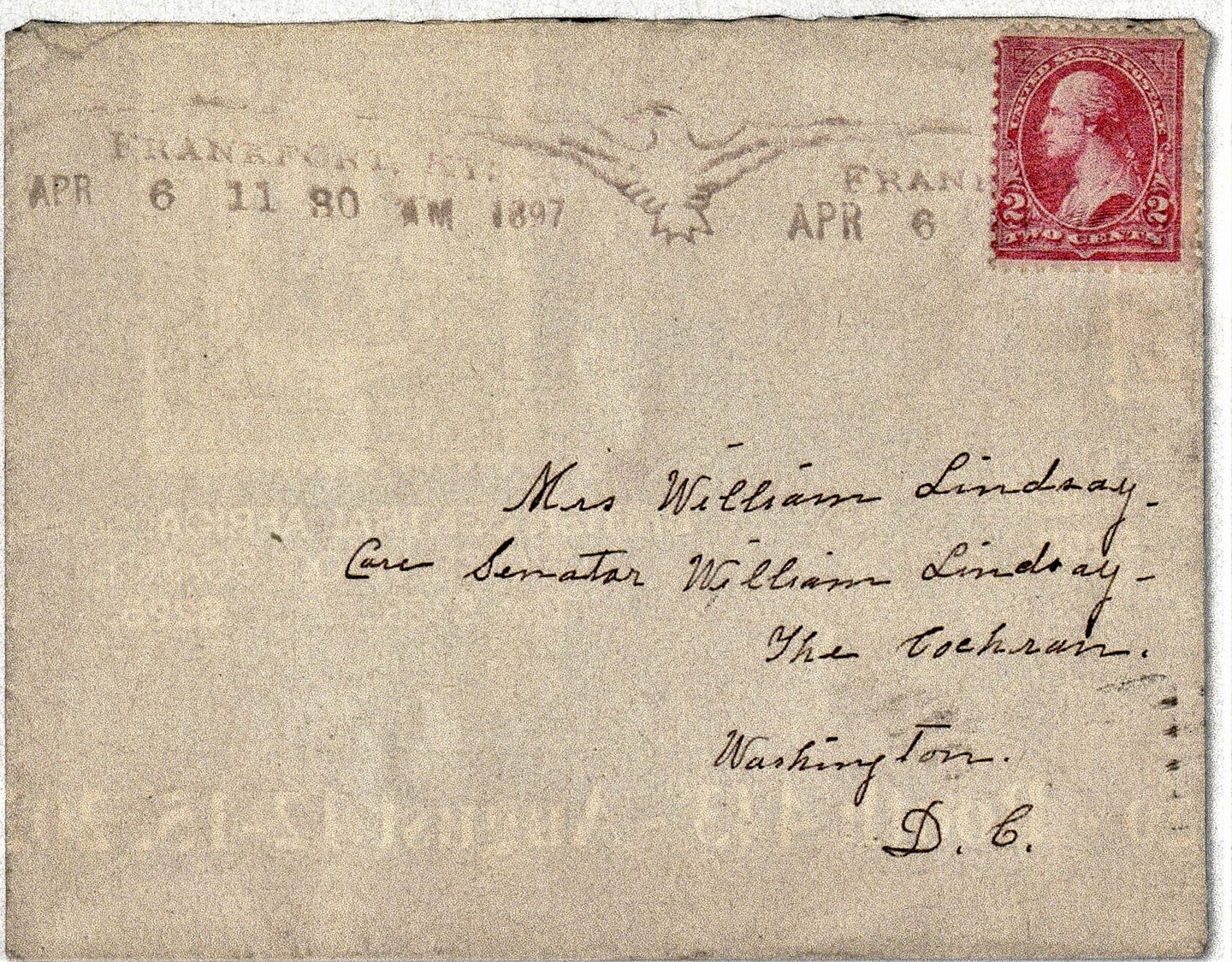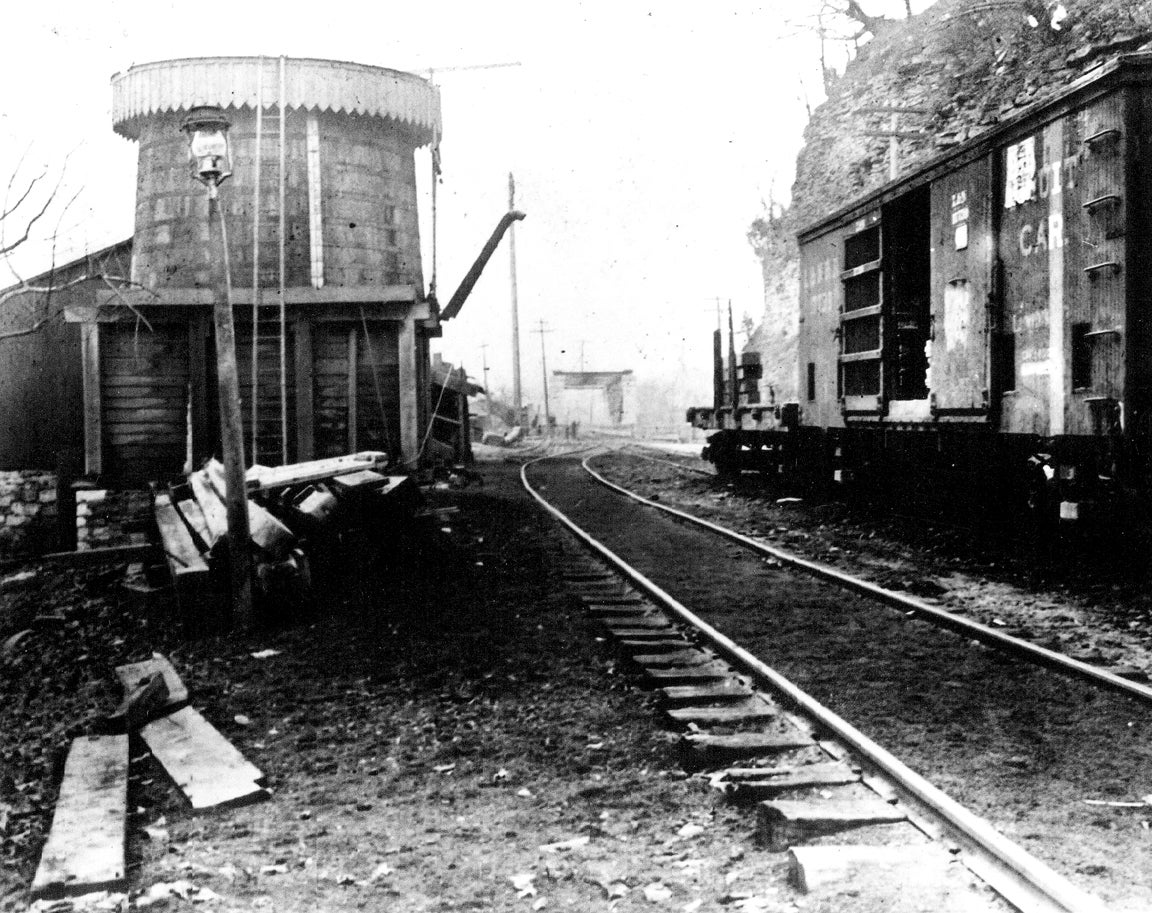By Jim Axon
Guest columnist
While taking a trip to the Smoky Mountain National Park and the Cherokee, North Carolina, area in 2012, my wife, Linda, and I were in Bryson City and stopped at the Mountain Treasures shop.
In the corner, on the floor were two carved Cherokee masks that caught my attention because of their striking beauty, size and image. They were definitely a pair that were made together. One mask is a warrior snake mask (or war mask) and the other is a bison hunting mask (or medicine mask). They are 24 to 25 inches tall, which is very unusual as most are less than 11 inches to match the size of a human face, and are traditionally were used in ceremonial dances.
The owner of the shop, who was half-Cherokee, did not know what he had for sale, but told me how they got there. The previous owner of the masks had them made in the early 1960s. Upon his death in 2010, the masks were brought to his shop to sell. After buying the masks, I stopped at the Medicine Mask Craft shop in Cherokee to talk to the owner to get an indication of who made the masks. When she saw them she said they were likely made by Cherokee maskmaker, Allen Long, and probably dated back to the late 1950s or early 1960s. She also told me that there are several people in the area who would love to get their hands on these masks. She said to contact Davey Arch, who is a maskmaker and was manager of the Okonaluftee Indian Village in Cherokee, to verify their origin.
First, I emailed Arch, sent him a picture of the masks and told him what I knew about them so far. He said they were made by Long, who had carried on the tradition of carving masks after his father, Will Long, who was a medicine man, well-known historian of Cherokee culture and maskmaker.
Arch said the warrior snake mask and bison hunting mask were the most popular to make. The snake on the warrior mask depicts a copperhead snake. Some masks had a rattlesnake carved instead. He told me I had a treasure and, as an appraiser of Cherokee artifacts and crafts, gave me his estimate on their value.
Historically, the warrior snake mask was worn in the war dance and the warrior or brave dance. It was last used before going to war with the Creeks by Chief Junaluska in 1813, in support of General Andrew Jackson. If he had known what future-President Jackson was going to do to the Cherokees (Trail of Tears), he may not have saved the general’s life on one occasion.
The bison-hunting mask was worn during the buffalo dance before going after bison. This large version of the mask was sometimes made to serve as a decoy to approach bison during the hunt while also wearing a bison cape. (As a side note, there used to be an estimated 60 million bison in North America that were reduced to about 1,000 by 1889. There are now about 500,000 bison. Kentucky may have been home to more than a million at one time.)
I have been privileged to have the two masks carved by Allen Long for the last seven years; but now, I have decided to return them back home where they belong. I contacted the manager at the Qualla Arts and Crafts Mutual Inc., a shop in Cherokee to tell her I wished to donate them to the shop. The shop, which sells works of art and craft that the Cherokee people bring, also has a wing that displays some of the finest work for visitors to see and enjoy, including a display of carved masks by several carvers, including the Longs. They do not have any masks near the size or beauty that these two masks present.
After I emailed a picture of the masks and said I would donate the masks if they would be put on display, she responded by saying they were gorgeous and would love to display them. She also said that Allen Long’s family would be greatly appreciative to have them back for them to see and enjoy, as well as show to the general public. I plan to take them to Cherokee in the coming months, which will bring these masks full circle back to Cherokee to be displayed and enjoyed by the Long family, the Cherokee people and the general public.
My interest in Native American culture started as a child in a county in Iowa, where the Mesquakie tribe lives at what now is more than an 8,000-acre settlement. I used to go to their Pow Wows to see them perform many of their ceremonial dances. After graduating from Iowa State University with a bachelor’s degree in fish and wildlife biology, I served 37 years with the Kentucky Department of Fish and Wildlife Resources, starting in the fall of 1968. I took my family to Cherokee on occasion while visiting the Smoky Mountain National Park and remember seeing some of the carved masks.
The Cherokee also have a presence in Kentucky. Did you know:
- the Cherokee represent the largest tribe in the U.S.
- they surrendered all their land east of the Kentucky River in 1772 to the State of Virginia
- they sold all their land in western and central Kentucky to the Transylvania Trading Co. in 1775
- ceded their land in southcentral Kentucky to the U.S. government in 1805. The Red River in Clay County was named after Cherokee Chief Red River, who resided in the area in the late 1700’s.
Jim Axon, of Frankfort, retired in 2005 and, since then, has done a lot of traveling and fishing with wife, Linda. He has acquired several Native American masks over the years during their travels. Now that he will no longer have these masks, he will be on the lookout for replacement masks. Axon also has a passion for music and grew up playing the alto sax. He always desired to be able to play together with another sax player just to hear the great harmonic sound that is created. Therefore, he has taught Linda to play the sax in recent years — fulfilling his wish.

